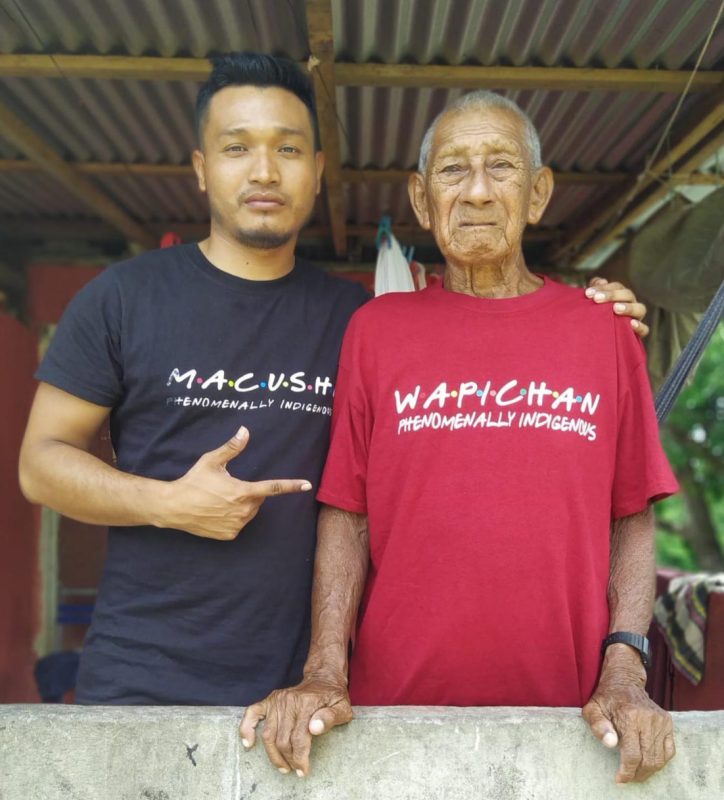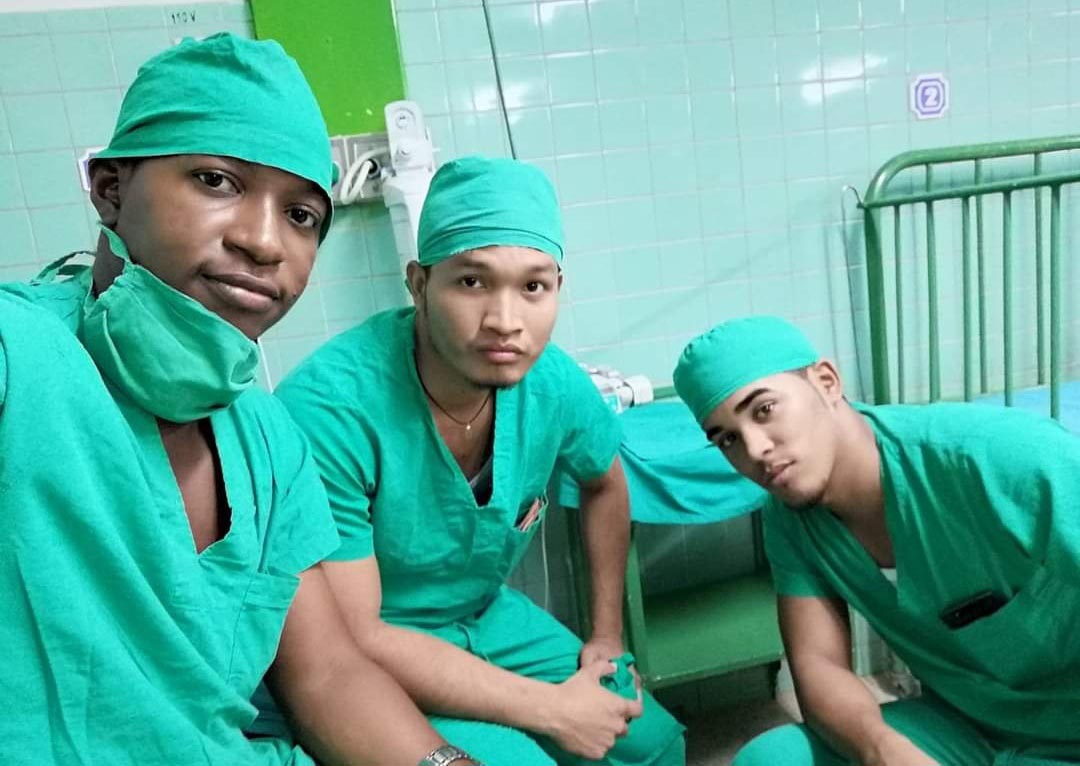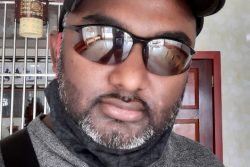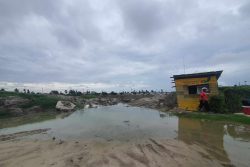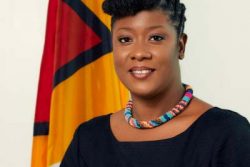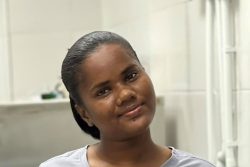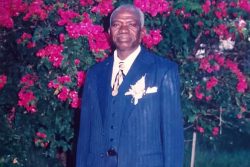Dr Leroy ‘Jimi’ Hendricks, 29, is using his skills and knowledge as a medical doctor, entrepreneur, and through activism, which he says is new to him, to to empower Indigenous people in Guyana, and help the wider Guyanese population and people around the world to take pride in their indigeneity.
“Those of us, given opportunities as professionals, have to take up multiple roles, including that of advocate. Most times, the majority of our people are not given the opportunities to fulfil that purpose of being something more. Our education system does not favour Indigenous people’s development. It does not cater for the preservation of Indigenous languages and culture. That has to change and it has to begin with us,” he told Stabroek Weekend in an interview.
“As a people we don’t understand, fully, what we can do or what we are entitled to. Most days you see news about Indigenous people’s legal rights being trampled on. It’s just that we don’t know where we stand and most of that is as a result of lack of representation and lack of understanding how the system of government works.
“I am passionate about Indigenous representation but I am new to it. I am taking steps through my business, Lethem Exclusive Apparels, as well. That is one way of doing it. Through the business I can also give back to the community.
“I’m still at the very base of my career and there is so much I want to do for myself before I can do so much more for people to uplift themselves.”
A former teacher, Hendricks is part of a newly formed creative group called The Nine Nations. “Our idea is to give Indigenous artists and creatives a greater market for their products in an effort to have a greater influence in the society,” he shared.
The Nine Nations’ first event will be a fashion show featuring Indigenous designs on the 26th August in Almond Street, Queenstown. Indigenous art, cuisine and music will also be available.
Hendricks identifies as “Indigenous,” although is of Lokono (Arawak), Makushi and other ancestry.
Medicine
Hendricks, who graduated from the Latin American School of Medicine (ELAM) in Cuba in July 2022, is currently doing his first rotation at the Georgetown Public Hospital (GPH). He is one of four medical doctors Lethem has produced, among whom is his older brother Dr Orlando Hendricks.
On his return from Cuba, his placement was at the GPH but because of delays in processing newly returning doctors, he was reassigned to Lethem Regional Hospital in his hometown.
“I was most impressed that most of the doctors, including my brother and a cousin, are from Lethem. Some students I taught are health workers, nurses and midwives. It was nice starting to work as a medical doctor at home. It was good to see Lethem people in the labs, most of the staff at the hospital are Lethem people. Ten years ago that was not the case,” he related.
The exposure before doing his rotation at the GPH, he said, was a good experience. While patients visit doctors at the GPH, he noted that because of inadequate medical services the doctors at Lethem also conduct medical outreaches in villages to treat patients.
“We also have to transfer critical-care patients to Georgetown and to Brazil depending on the urgency of cases. Sometimes we have to accompany patients in an ambulance to Boa Vista when we are unable to treat critical patients at Lethem and we are unable to get them to Georgetown in time. Boa Vista is more medically advanced than us in Lethem,” he shared.
Because he taught at St Ignatius Secondary School prior to studying in Cuba, the Region Nine Department of Education invited Hendricks to travel with Region Nine’s team as the medical officer to Georgetown for the National Schools Athletic, Swimming and Cycling Championships last year. “We also saw very good results at the championships,” he said.
He continued, “I’m now in Georgetown in the surgery department and I have to complete a 12-week rotation before I go to another department. When I finish 18 months of my rotation, I have to go back to the hinterland to serve another two years.”
In Cuba, where he was schooled in Spanish the system is somewhat different. “I was lucky when I returned to Lethem I had people who spoke Spanish so the transition wasn’t difficult,” he said.
Going forward, he wants to specialise in sports medicine. “Instead of just being in an office, I could offer my services and advice to people in the sports department. This is in addition to specialising in another area, I’m looking at.”
Jimi
Hendricks acquired the nickname “Jimi”, owing to Jimi Hendrix the popular American musician, while he was a student at Central High School. The name stuck as he is now best known as Dr Jimi Hendricks.
He was born in Lethem and brought up by his single mother, Stephanie Hendricks. His father, Brian Hendricks, originally from Santa Rosa, Moruca, reportedly drowned just two months before he was born. His body was never recovered. His father was a medic in the Guyana Defence Force and his plan was for his five children to become doctors; something Hendricks was unaware of until recently. “I’m glad to know I am fulfilling one of the things he wanted us to become without knowing he had such a plan,” he said.
“Our childhood was a tough one. We were quite a young family when my father died. We lost the sole breadwinner. I was told every afternoon when he came home he had a blackboard on which he taught my older siblings because he believed in education. Because of the difficulties my mom experienced after his demise, a Canadian wanted to adopt me and my mom was considering it because she felt she was unable to give me what I needed to grow.
However, she could not go through with the adoption. Growing up, a lot of days were rainy.”
Hendricks wrote the then Secondary School Entrance Examinations at St Ignatius Primary School and was a top performer for Region Nine. He obtained a hinterland scholarship to Central High School.
“At that age my focus was more on playing and I was surprised I got a Georgetown school. I attended Central High School from forms one to five.
“In Georgetown, I was first placed with a guardian where there was always bickering that oftentimes escalated. I didn’t grow up in that kind of atmosphere. It was new and unsettling to me. I questioned what I was doing away from home,” he said.
He spoke of his concerns to the welfare officer attached to the hinterland scholarship programme and was moved to another guardian. “In the new environment my grades started to improve. I wasn’t doing well before,” he noted.
At present he is staying at the home of that same second guardian. “We have become like family. They were very supportive throughout my schooling and today I’m very appreciative,” he said.
Hendricks was one of the top Caribbean Secondary Education Certificate (CSEC) examinations performers of 2010 at Central High.
“At school I wasn’t an outspoken or brave person. I was very shy and kept to myself,” he recalled.
After Central High, he applied for admission to the University of Guyana (UG) but his application was rejected because he was 15 years old going on 16.
“That was how I ended up at Queen’s College in the sixth form to write the Caribbean Advanced Proficiency Examinations. It wasn’t in my plans to do sixth form,” he said.
Once he was admitted to Queen’s College he applied for an extension to the hinterland scholarship which was denied. “It wasn’t easy but I had help from several people, including my guardian, who saw some potential in me and helped me through. Mr Edward Jarvis of the Ministry of Education helped me a great lot through Upper Sixth Form. To them all I’m grateful,” he stated.
After QC, the idea of going to UG was no longer appealing because he would have had to pay for tuition, accommodation and meet every cost of living. “I had grown up a bit and understood more of life. I wasn’t able to support myself. My mother couldn’t afford it,” he noted.
Hendricks returned to Lethem in 2012 and the only job available was teaching. “It wasn’t something I had seen myself doing because of my reserved personality,” he noted.
However, when he took his application to St Ignatius Secondary, he was asked to report for duty the next day.
“I skipped the three-month observation period because of the shortage of teachers. I had no experience in teaching and I was literally thrown into the classroom. I was 18 years [old] and I was teaching students my own age. Teaching requires a whole different skill set but I guess they looked at my qualifications and thought I could do it,” he recalled.
“My people’s skill was very poor. However, placed in that position I had to adapt quickly to deal with parents and large gatherings. I trembled the first time I stood in front of the PTA body. Eventually, teaching helped me to overcome the fear of public speaking.”
He taught integrated science, physics, chemistry, human and social biology and mathematics in the CSEC classes for three years.
“My students’ results at CSEC were exceptional. It was very satisfying to see them learning and doing well because I knew I was preparing them to move forward in life,” he said.
In primary school he had won a science award and during the three years he taught at St Ignatius, he won Region Nine’s Teacher of the Year Award, twice.
As a teacher, he enjoyed accompanying the sports teams out of Lethem and travelling with the science fair students to Georgetown.
Despite all that, however, he felt the need to continue studying. Aviation and medicine were at the top of his list, but tuition fees for the aviation courses were out of his reach.
His brother, Orlando, encouraged him to apply to the Public Service Ministry (PSM) for a scholarship but he was hesitant. He had applied before for a scholarship to China, was shortlisted and went through the entire process before he was told he was not successful. “That was very discouraging. I didn’t want to go through the PSM again. Orlando told me to think positively and await the outcome. I applied and I was accepted,” he said.
He left for Cuba in 2015.
Cuba
When he arrived in Cuba, he said, he found that “there was no food shortage, no electricity problems and their transport system was efficient. It wasn’t difficult like people said it was before I got there.”
When Donald Trump took office in the US in 2017, he said, things started to get difficult. “Trump tightened the economic sanctions even more on Cuba and we started to feel the squeeze,” he related. “Basic stuff like sugar and flour were hard to obtain. When Covid-19 struck in 2020 that made things worse. We couldn’t go anywhere. The borders were closed. We couldn’t get proper food. It was like we were in prison. Towards the end of studies, there were delays in the programmes. All we wanted to do was to finish them. We were all emotionally drained. Some of us wanted to come home but they said we couldn’t leave. Food prices were increasing every day. When I first got there a tray of eggs was about 33 pesos and when I left, a tray was about 3,000 pesos.”
The PSM sent Guyanese students food supplies on two occasions but that only lasted for about two to three weeks. “After Covid-19 eased we restarted classes and we finished our programmes. In July last year, we finished our final rotations and we then graduated,” he said.
T-shirt line
While classes were suspended or delayed because of Covid-19, Hendricks used that time to start online, a small t-shirt business, Lethem Exclusive Apparel. “We printed mostly Indigenous stuff in 2020. So we can have Indigenous t-shirts to wear throughout the year. You don’t have to wait until September to put on something reflecting your Indigenous heritage. Wearing the t-shirt on any day is a contemporary way of showing representation. When you wear our t-shirt, it is not just about putting it on, it is speaking of identity and pride in that identity. That was one of our goals,” he related.
He partnered with another past hinterland student who was in Guyana at the time to get the t-shirt project moving. It was registered as a business in 2021, the same year the t-shirt line was launched.
The main office is in Lethem and sales are mostly seasonal, like during the rodeo in Lethem or Indigenous Heritage Month. Printing is done in Georgetown.
“We are trying to make the products available online. We have been targeting Guyanese Indigenous peoples, but we are now looking at Indigenous communities around the world. We want to reach a wider market. The Indigenous community in Georgetown is far and few so the market is limited and Indigenous communities across Guyana are scattered,” he noted.

